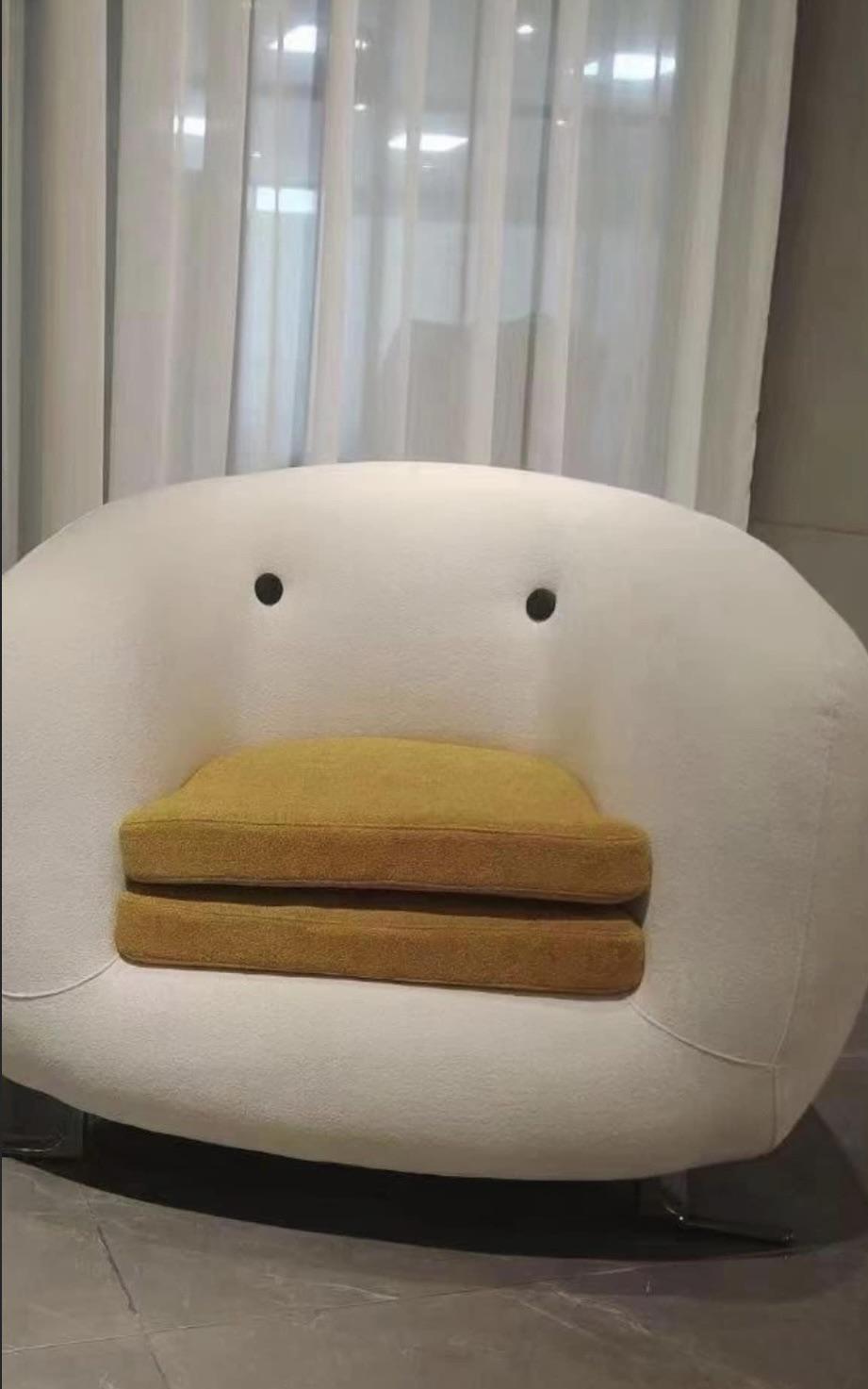I am a computer programmer, this is exactly how it works. Why else do you think electronics have fans in them if not to blow fresh, crisp wifi in and stale, soggy wifi out?
Duuh so obvious and nobody realized it 🤦♂️
You’ll get faster download, but your upload speeds drop off a cliff
I’m no expert but from my experience it is the other way around: Upload speed increased, Download speed decreased. Which makes sense because the outgoing data is boosted by the wind whereas the incoming traffic has to overcome the wind. If you want to increase download speed I suggest placing a hoover behind the router.
No because the fan that is boosting the Wi-Fi to you would prevent your computer requests to the Wi-Fi box.
So while it’ll be easier for you to get a YouTube video It would be harder for you to actually type a search. 👍
Just use an electromagnet instead. Invert the polarization to attract or repell all those pesky wifi particles. This way it boost botb up and download speeds.
this is far too complicated, we just need another fan blowing back toward the router
May work in niche cases where passive cooling is insufficient and overeating causes Instabilität.
INSTABILITÄT!!!
I dunno, I thought that it was instabilität that causes overeating.
It’s a vicious cycle. But you already knew that, doctor.
yes and you can also leave out a plate of cookies where you want a strong signal so the wifi waves will go there when they’re hungry
Just don’t bring the ones from the third party, I heard they’re bad for the privvy or something.
Don’t be silly!
Wifi is not man, Wifi doesn’t eat cookies
It eats lead. That is why wifi antenna’s have a bit of lead surrounded by copper, so it can lure the wifi with the lead and catch it with the copper. Also why it stops at lead walls since it is like a buffet for them.
Ask ElectroBOOM, he would definitely make a video rectifying it
*bang*OUCH F___ S___ why is there a loose wire?I read the last part in his voice lmao
Same here. 🤣 I absolutely love when people have the skill of typing out something that your brain reads in a specific voice and manor.
Putting a fan begin your router won’t boost the range because photons emitted by the router’s antenna won’t be affected by moving air from the fan. Putting a floodlight however…
Even if they were affected by any measurable amount, the photons move so much faster than the air that it’s an absolutely negligible difference incapable of being measured. It’s like 1 trillion divided by 1 trillion and 1 equaling approximately 1. The outcome is unaffected by the extra 1. It’s a non-factor. I’m trying to explain this for the future not-smart-people but I think I’m just making it much worse.
Photons?
Visible light, radio frequencies, microwaves, x-rays, infrared, ultra violet and so on are just light (photons) at different frequencies.
And your friendly EMH.
If it has metal blades then it will reflect some of the radio signals, making the transceiver more directional. With how it’s set up in the post, it could potentially be a benefit to devices that face the front of the router and fan, but a disadvantage to devices behind the fan. Same logic with that Facebook trick of putting tin foil or cut up drink cans behind the antennae.
However, most newer and higher end routers use beam forming antenna arrays which are already directional and can automatically focus the signal toward your devices. Having reflectors around those can actually interfere with the antenna array and decrease speeds for all devices.
Next you’re going to tell me having the microwave on slows my WiFi down!
Beam forming is a bit more complex than just being directional.
It makes the signal stronger in the target location, but the antenna is still very Omni-directional. It’s just using extremely small signal offsets between transmission antennas to optimise the amplitude of the signal in the area of the receiver.
Directional antennas can still very much help, as well as wave guides to push more signal in the desired direction (sacrificing signal in another, potentially undesired or unrequired direction).
Source: over 10 years in IT with a focus on wireless network technologies.
It gets really interesting when you get into mimo and multi-user mimo, and the system is transmitting on the same channel to multiple endpoints at once, with different data for each. Shit is crazy.
Facebook lmao. That trick was around decades before Facebook.
depending on the fan, this would blow the wifi too fast past the devices. to counteract this, you have to cover your devices in magnets to catch them
Technically yes, but in practice any gains are going to be counteracted if not outweighed by the electromagnetic noise from the fan’s motor. To avoid that interference and see any real improvement in your signal strength, you’d have to either use a fan with a shielded motor (the last such model went out of production in 1953, so good luck finding one) or a fan driven by an alternative power source such as a water wheel.
Pretty sure both parts of your answer is wrong
Yeah that’s true, but nah.
The wifi beams come out in all direction. You can help boost the wifi by placing a mirror behind the router. Then the rays will be reflected back to you and not wasted.
I’m about 62% sure this is a joke…
Please help, I’m clueless about this kind of stuff.
Look up the DIY parabolic reflectors people used to use on their WiFi antennas, they did actually work! I used one and recorded a marked improvement in WiFi strength at the furthest point in my home that was previously a low connection quality spot.
Radio waves come out of an antenna and just go in every direction, so a router against your outer wall is wasting a lot of its energy just directed into the neighbour’s house. If you can reflect some of that back in, you get improved signal reception. It’s very cool :-)
But if waves transmit information, and the same information comes at all sides, won’t the signals that bounce off the reflector arrive after the waves with a direct line and thus transmit redundant information?
Yes. They will.
When creating a reflector, you want to place it a specific distance from the focal point, so the waves are in sync with the waves going direct to the device, they will be offset one or two full wavelengths, but that hardly matters. About a half wavelength away from the emitter/antenna is ideal.
There’s also a way to calculate the parabolic arc you want to make the signal very directional (the way a satellite dish works, but in reverse. Those dishes collect and concentrate the signal, in this case you want to redirect the emission in the same direction - think about it like a flashlight, where the majority of the light is in a small cone in the middle, but there’s still some light going everywhere that isn’t blocked by the mirror reflector dish in the flashlight).
There’s a hundred different ways to get this done, tons of antenna designs to work with, but in general, wifi uses beamforming, which is a method to use multiple antennas that are transmitting the same signal, but they have the exact waveform slightly offset from eachother, which makes the signal much stronger in the complementary direction. It basically generates a beam the hard way. Wifi has gotten very good at doing this, so reflectors and directors, and all that fancy antenna design stuff isn’t really required.
The only real improvement to be made, given wifi’s current complexities, is to put in larger antennas; most wifi antennas are quarter wavelength or often smaller… “Upgrading” to well matched full wavelength antennas may yield some benefit, but there’s a lot of nuance there too. It’s a deep subject so I’m just touching on how things go. I find it fascinating, I’m sure not everyone does.
Waves can bounce off of everything, wifi/Bluetooth/cellular automatically compensate for this effect. There is a lot of signal processing involved with wireless data transmission to filter noise and correct errors. This is part of the reason why it’s taken decades to reach this level of wifi speeds and why Bluetooth has a real hard time matching wired audio.
I have one against an outside wall to get service in my standalone garage. Success.
I think mirror won’t work, but this might:

It’s the same principle of al satellite dish and it works, but I’m 86% sure that mirrors won’t affect wifi, so we’re still not at 100% but getting there.
Depends on what frequency your “mirror” mirrors.
A traditional one reflects higher frequency of electromagnetic rays (visible light) than what you need for wifi (in the microwave frequencies)
So you’re saying the walls of an old microwave might do the trick
Jokes aside, anything made of metal will be a good enough reflector for most consumer use.
A coke can cut vertically in half makes a great parabolic relfector. Pepsi can maybe. Dr pepper not recommended.
Actually yes.
Microwave ovens work by exciting water molecules using many hundreds of watts of ~2.45 GHz microwaves.
This specific frequency has a heating effect on water, so when you blast enough of it at food, which is often very saturated with water, it will heat up. The heat energy will transfer to the rest of the molecules in the food by contact.
That’s the general idea at least… I’m sure there’s more interactions that happen, water is just the most significant, to my knowledge.
So the protection in the microwave is capable of reflecting (for the purposes of containment) 2.4Ghz microwaves very well, and bluntly, does a good job with many other radio waves too, across a pretty broad band of frequencies… so the material that makes up the protective chassis of a microwave is ideal for making a reflector for wifi, since it was constructed with the idea of reflecting 2.4Ghz frequencies. Microwave ovens create the signal fairly crudely with a magnetron, but the underlying concepts are the same.
If it’s a silver layer on a glass/plastic pane (like basically any mirror) and it’s big enough (more than idk, let’s say 20 cm to be safe) why wouldn’t it mirror the lower frequencies too?
Not enough interaction with the waves.
I’m not fully versed on all the physics of it, but to my understanding, the layer of silver that makes up the reflective surface of a mirror is crazy thin, like, less than the thickness of paint.
The basic concept I was explained is that the longer the wavelength (lower frequency) the easier it is for it to penetrate obstacles, specifically things that are relatively opaque to radio waves. The very high frequency (small wavelength) waves of light, are so small that almost everything interacts with them; so when they make it to the silver layer, despite that silver layer being impossibly thin, the >100THz waves, will bounce. When dealing with stuff that’s much lower frequency (like 2GHz to 5Ghz, many orders of magnitude lower frequency), there’s not enough of the material to interact with the wave to have any significant effect on its propagation, so it passes right through.
This is a good observation and a great question. I’m sorry I couldn’t be more specific, I’m just not as well versed in the physics of it all to really get into the details; but I hope this helps.
Oh yeah probably but it might absorb some or even more thant it reflects
So, wifi is made up of radio waves, specifically micro waves, which are all sub-classifications of electromagnetic waves.
There’s another common electromagnetic wave you’ve certainly heard of: visible light.
While the wording is a bit awkward, the previous poster isn’t wrong. Just, in radio, it’s referred to as a reflector, not a mirror. Same principle, different area of technology.
EM is incredibly interesting especially since all data communication, with the exception of copper wires, is EM. Fiber optic is light, which we’ve established, is EM, and wifi is radio, which is also EM. Apart from the copper in your ethernet/DSL/Coax cable, it’s all EM. It’s fascinating to me that we use EM for so much, and fiber is considered the pinnacle of data connections, yet, light propagates slower through glass than radio propagates through the atmosphere, so technically, wifi can get a signal from A to B faster than fiber can… and we put that stuff in our house.
All EM is at, or near, the speed of light. Glass, used in fiber, tends to slow the light down about 30% or so… that’s fascinating because the internet is largely fiber, and so the information for this or anything else on the internet is being delivered to your device at, or very near the speed of light.
Anyway, I’m off topic. I’m just a gigantic nerd about this stuff.
Radio waves are faster in a vacuum, ditch the fan and put it in a shop vac.
But the fan blows the air away, leaving nothing but vacuum
💡
Alright, so according to Bernoulli’s principle says that moving fluids result in a lower air pressure. Light and all electromagnetic waves are fastest in a vacuum. Lower air pressure is closer to a vacuum. So… Marginally? I have no idea how much but I’m guessing it’s miniscule enough to need special equipment to detect. Not worth it. Plus the fan itself could block the waves. The fields around the wires powering the fans would have an effect as well. All of this is going to be super minor but I think the physical blockage of the fan is going to have more of an effect (but still teeny tiny) than anything.
It could be amplified by placing the router up high and using a strong ceiling fan to blow the waves downward , therefore receiving gravitational amplification
In order to be unessecary specific:
if it would benefit the waves:
it would only benefit the outgoing waves.
The waves coming back feom clients, transmitting data back to the wifi access point would have to fight against this additional airpressure.
But this is all only hypothetical and i am sure in the real world it would make no difference even if there would be a benefit in theory.
And yes you are correct the electromanetic field of the spinning fan would definitly harm and not improve the signal quality.
It’s simple. We point it away from the router except during large uploads!
No no no we make use of MIMO beamforming and let the uplink signal get reflected towards the back of the fan so it slipstreams into the router
And put weapons grade Uranium in front of it to get the quantum boosts.
use a fan with metal blades












